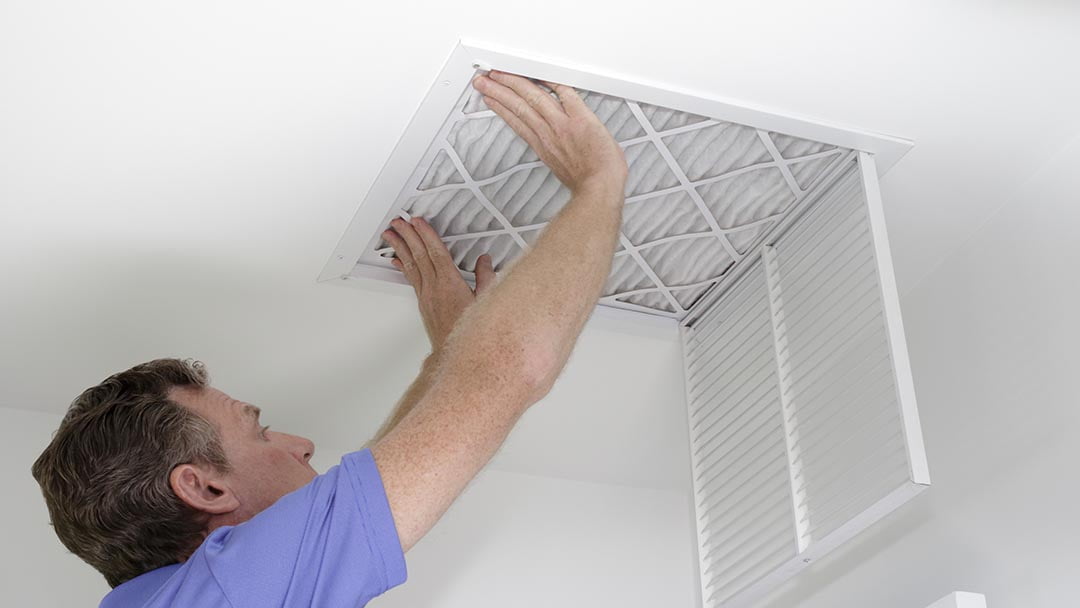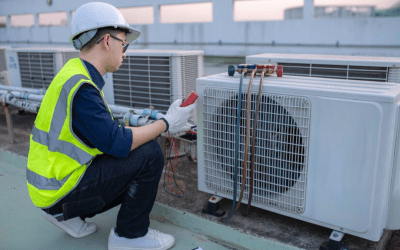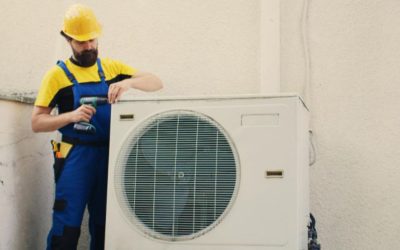Dirty filters caused the furnace to overheat
Dirty filters are the most common cause of furnaces that start blowing in warm air then stop midway. Ideally, air filters sieve dust, pollen and other contaminants from the air, ensuring that clean warm air is blown to your home. As a rule of thumb, air filters require regular replacement, so If left unreplaced for long, dust and other debris will collect behind them and block the free flow of air. As a result, your furnace is forced to run for longer than usual in order to heat up your home. This, in turn, leads the furnace to overheat and eventually it’s likely to shut down.
Solution: An overheated furnace will eventually damage the filters. When this happens, the problem moves from repair to replacement; you will need to replace the filters to have your furnace function again.
The thermostat was left On
The thermostat controls the furnace blower. It has three settings; “On, Off, and Auto”. If it’s left on, the furnace blower will continue to blow air to your home, even when the furnace is not heating up the air.
Solution: Set the thermostat to “Auto”. This ensures that the furnace blower only blows in warm air and stops when the furnace is turned off.
The panel on the blower motor is open
Modern furnaces are designed to uphold safety above everything else. Therefore, every component of the furnace must be properly connected for the furnace to function. If the furnace stops blowing in hot air, chances are, the panel on the blower motor was left open. This is a common mistake done after hastily cleaning the air filters.
Solution: To troubleshoot this problem, ensure the blower motor panel is shut all the way.
Issues with the pilot light
A gas furnace relies on the pilot light to ignite and keep the air heated. If the furnace stops blowing in hot air, it could be because the pilot light is out.
Solution: You have to relight the pilot light. Your gas furnace manual has clear instructions on how to relight the pilot light. If the pilot light refuses to light, counter-check that the valve switch to the gas supply is properly connected. If the problem persists, it could mean that the thermocouple on the furnace needs replacement. Contact your local furnace repair for help.
Schedule routine maintenance for optimal performance from your furnace
For optimal performance throughout the year, make a habit of scheduling occasional maintenance for your furnace. Remember, a serviced furnace is an efficient furnace.
There is something about coming in from the dark on a bitterly cold day into a warm home. But even when you want some convenience that helps you escape from the murderous clutches of nature, and a painstakingly cold house in winter, you don’t want your pump running all day long when no one is home. At the end of the end, if you’re like most people, you want to conserve electricity. Modern thermostats are the remedy to freezing houses and unnecessary use of electricity. Newer thermostats have capabilities that allow you to turn your HVAC system on as you leave your office and by the time you get to the house, your house will be a lovely 72 degrees- exactly what you need.
Traditional thermostat can either be programmable or non-programmable. Although Non-programmable thermostats are usually cheaper than their counterparts, they are very antiquated. To either heat or cool your house, non-programmable thermostats require you to set the temperatures manually, and this can lack exactness. Programmable thermostats on the other hand feature a digital interface which allows time period programming. This type automatically adjusts the temperatures based on time and you can have multiple settings per day. However, programmable thermostats may count as a type of automation, but they aren’t exactly smart. Both programmable and non-programmable thermostats don’t come close to the convenience modern Wi-Fi thermostats offer.
Smart thermostats have revolutionized how homeowners now heat and cool their houses. Smart thermostats come with added features that include remote programming, improved efficiency, and feedback, geofencing, learning and alerts. Once you sync the thermostat with a Wi-Fi- router, you will have access to the HVAC setting from your computer, smartphone or tablet which means you can operate your system from anywhere. There are three mains types of thermostat tech: geofencing, algorithms and motion sensors.
Geofencing feature Allows you to set a range of 3 miles to 30 so that when you leave that radius, your thermostat automatically sets to Away mode and as you near that mode, it returns back to Home mode and sets your home temperatures comfortable to prepare for your arrival.
Algorithms feature allows you to input the basic parameters for your schedule. This is similar to how a traditional programmable model works. The difference is that smart thermostats, over time, have an ability to pick your schedule and automatically adapt to changing patterns. For instance, the thermostat may notice that you’re normally out of the house at a particular time. It will them pick up this pattern and adjusts its schedule accordingly.
Remote sensors just like the name sounds rely on proximity sensors and motion. If the sensors detect that you’re near, it switches into home mode and vice versa is also true. Placing the remote sensor where there’s most traffic in your house will make its Home and Away mode accurate. Of course, just like the rest of the tech features, this one is also not perfect. Remote sensors entirely depending on your physical presence to trigger the sensors which means that when you’re out of range, the sensors assume you’re out.






